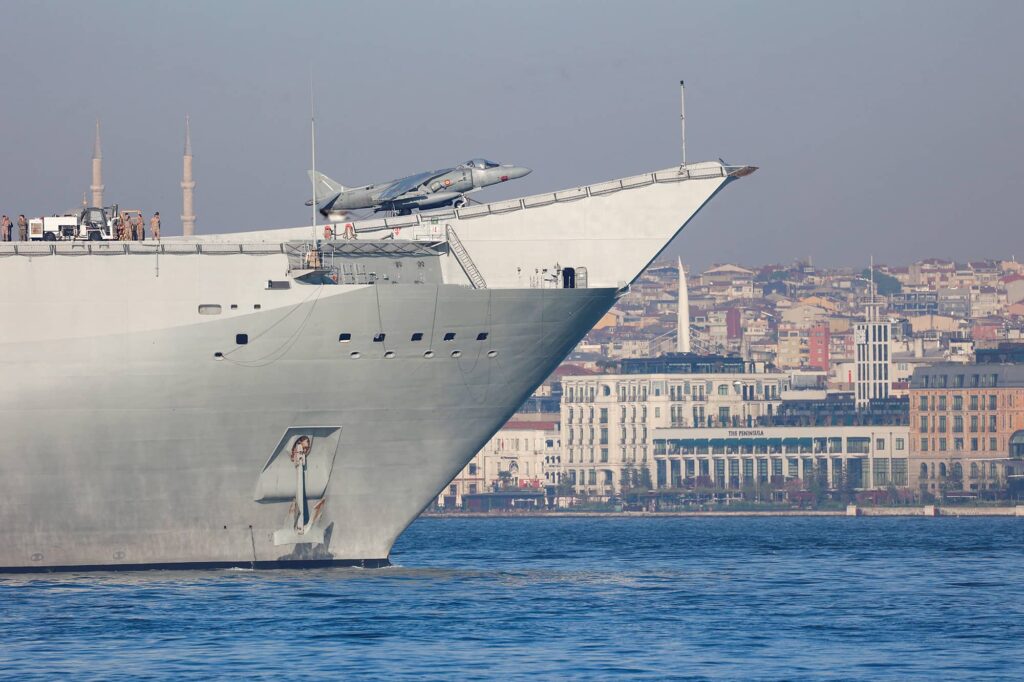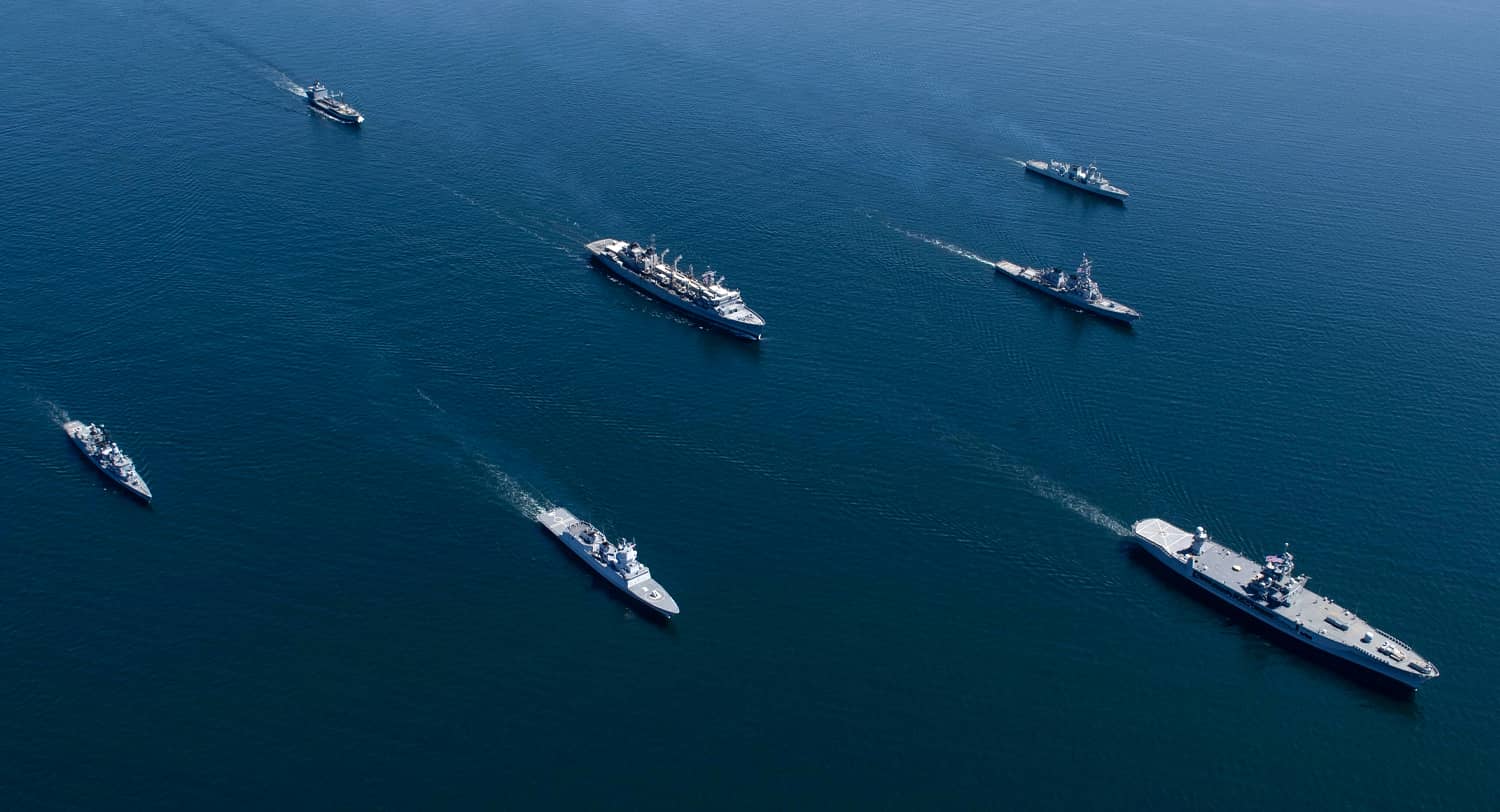It is springtime in the Mediterranean, as cruise ships busily make their way from port to port in some of the popular tourist destinations like Lisbon, Naples, the Adriatic Coast, and the Greek Isles. The Med looks peaceful to the people in the lounge chairs of those ships. However, such tranquility is only guaranteed by the gray giants that cruise the same waters, the multi-national aircraft carriers and support ships of NATO navies. These huge ships, displacing up to 90,000 tons, are capable of generating massive destructive power, but that is not their mission. Rather their mission is one of deterrence, and so far, they are doing an excellent job.
NATO’s Striking and Support Forces, headquartered in Lisbon, hold an annual exercise, a recurring “Peacetime Vigilance Activity” now in its seventh year. This year’s iteration was larger than any of the prior six, involving more ships and more NATO members, all under the command of US Navy Vice-Admiral Tom Ishee.
Admiral Hyman G. Rickover, the father of the American nuclear navy, had a favorite Latin expression: Si vis pacem, para bellum… which translates as, “If you want peace, prepare for war.”
Now let’s examine the last six months in the Mediterranean theater of operations. For many years, the Islamic Republic of Iran has fomented violence on Western allies and their partners through its proxies that include the Houthis of Yemen, Hizbullah in Lebanon, and Hamas in the Gaza Strip, as well as a vast network of other affiliated violent extremist organizations.
When Iran’s partner, Hamas, invaded Israel on October 7, the Western response was swift and effective. The United States dispatched two aircraft carrier strike groups to the region—USS Gerald R. Ford and USS Dwight D. Eisenhower. The Ford was extended on station and returned home after her maiden deployment last Christmas. USS Eisenhower has completed her mission and will return home soon.
The presence of these two aircraft carrier strike groups and their associated support ships probably deterred further attacks by the terrorist group Hizbullah in Lebanon and other violent extremist organizations operating in the theater. Furthermore, USS Eisenhower was on scene and engaged on 13 April when Iran launched a barrage of over 170 drones, over 30 cruise missiles, and more than 120 ballistic missiles at Israel. Incredibly, the next day, battle damage assessments indicated that 99% of the Iranian weapons were destroyed before reaching their targets.
So, what will happen now that USS Eisenhower is headed back to the United States? Should we be worried about a spillover of violence in the Middle East to the Mediterranean theater? Who will conduct the air policing missions and sea-based deterrent patrols to ensure that areas of current conflict in Syria, Lebanon, Gaza, Israel, and the Red Sea do not spill over into the sovereign territories of European allies? Who will ensure that the sea lines of communication around Europe remain open for the safe passage of goods and services and the flow of humanitarian aid to war-torn regions like Ukraine or Gaza?
The answer lies in the strength and capability demonstrated by the North Atlantic Treaty Organization. NATO was created in April 1949 with the signing of the Washington Treaty by 12 Allies in Washington, D.C. This year’s NATO summit will celebrate NATO’s 75 years of existence in Washington in July 2024. Accordingly, the Mediterranean exercise couldn’t have happened at a better time. As USS Eisenhower prepared to depart the Mediterranean theater, NATO assembled four different maritime strike groups from Italy (ITS Cavour); Spain (ESP Juan Carlos I); France (FS Charles de Gaulle); and Türkiye (TCG Anadolu), all operating in consort with a strong message of deterrence from NATO.

This maritime exercise offered three “first-evers.” First, France transferred authority for the operations of its nuclear-powered aircraft carrier the FS Charles de Gaulle and its strike group to NATO. That means the 10 percent of the French Navy present on that ship and its associated support elements were working under a NATO flag.
Second, the Turkish Navy showcased its naval capabilities in its new amphibious ship TCG Anadolu, and its accompanying escorts, peforming maritime interdiction operations; intelligence, surveillance and reconnaissance operations; and amphibious operations on Sazan Island, off the coast of Albania.
Third, Sweden joined this exercise as a full-fledged NATO ally with liaison officers at NATO headquarters in Lisbon and Swedish Grippen aircraft providing air policing and air support to activities throughout the exercise’s expanded area of operations.
NATO’s responsibility and reach have grown from a group of 12 founding nations to 32 nations today. NATO therefore provides security and stability for the one billion people that comprise the populations of its member nations.
NATO’s Mediterranean forces will continue to do its part under the capable leadership of Vice-Admiral Inshee and his multinational staff. According to a NATO spokesperson:
Peacetime vigilance activities have become ingrained in the NATO Strike Force’s operational routine, delivering effects across sea, air, and land domains to provide deterrence and reassurance while enhancing Allied connectivity. Ranging from the Central Mediterranean to the Black Sea region and all the way up to the Baltic Sea, and covering three Joint Operations Areas these forces assert NATO’s capability to protect every inch of Allied territory with the naval resources that are organic to the theatre.
We can’t afford to have it any other way.



